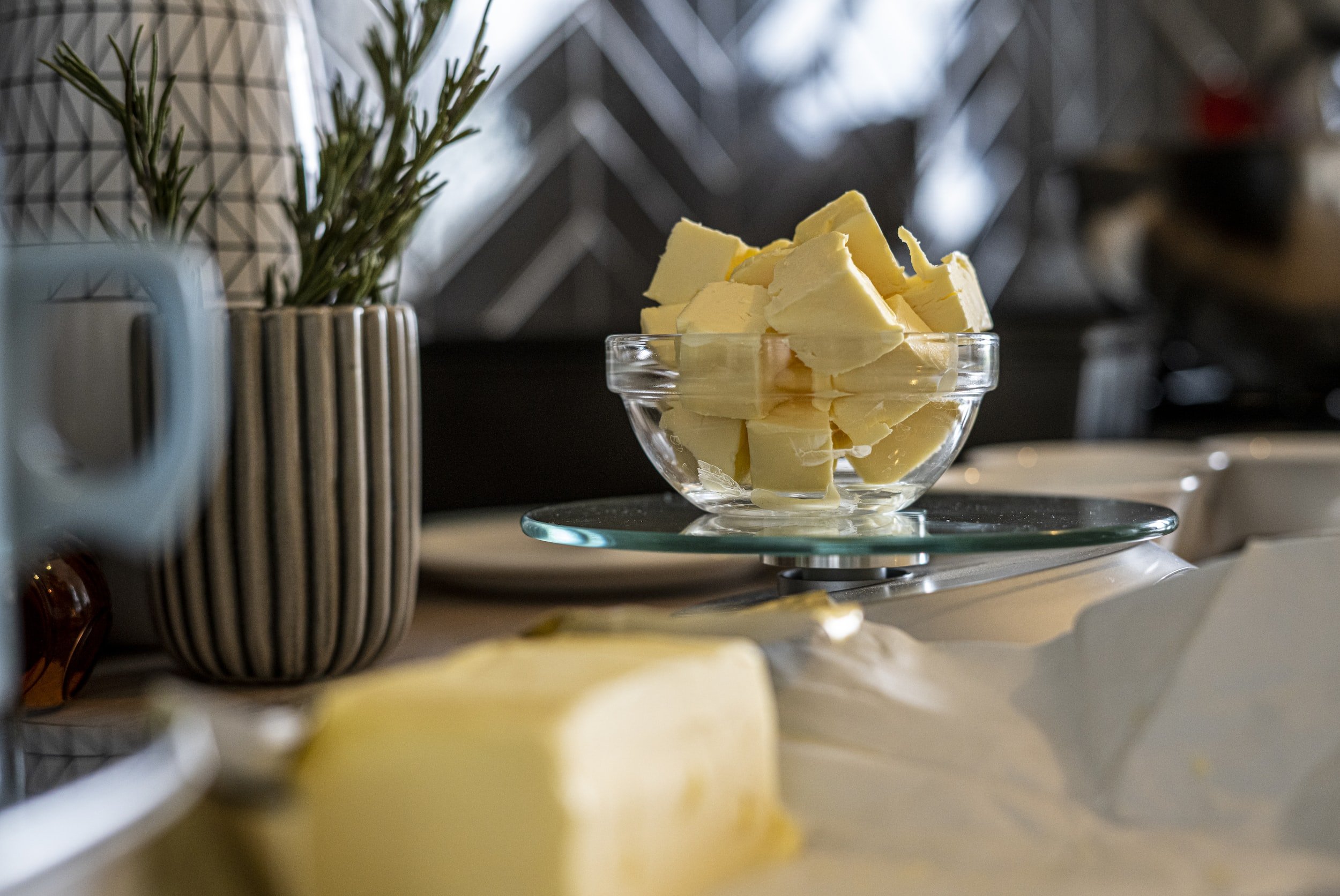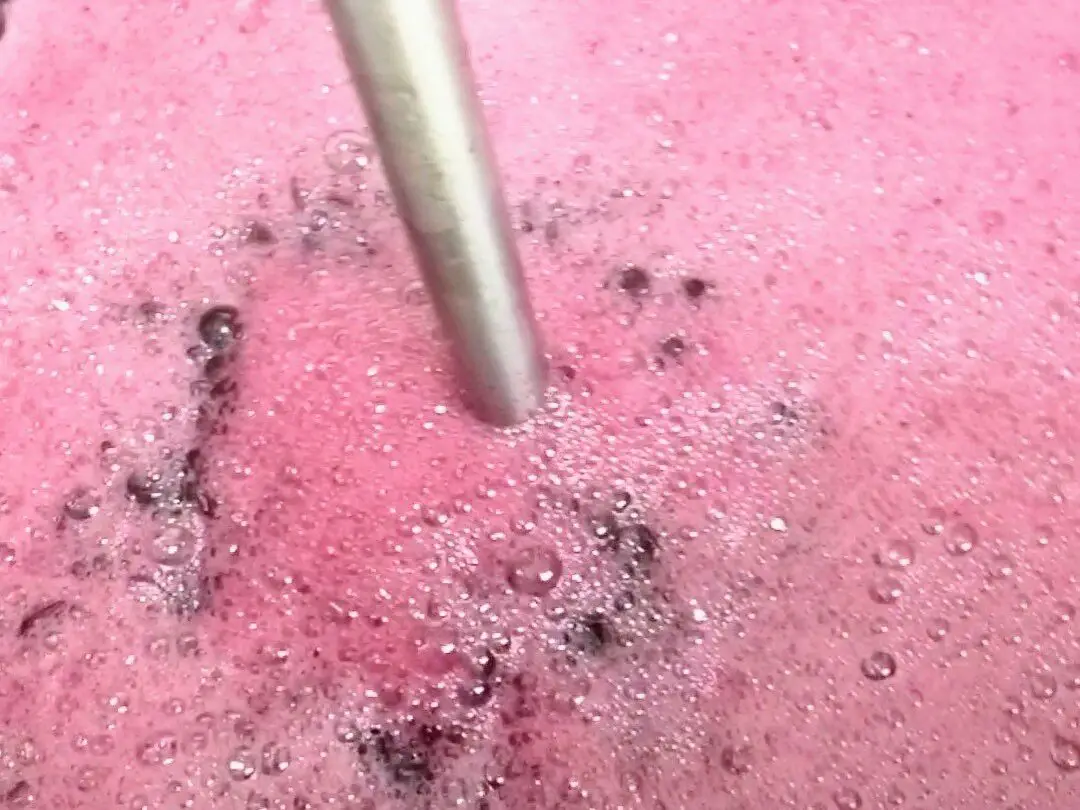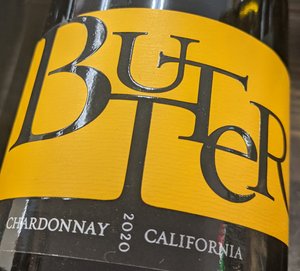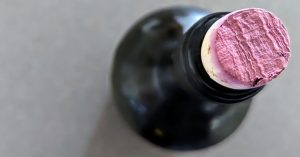
Red wines can be tricky for the average wine drinker because they include not just the qualities of the grape, but also present the unique touch of the winemaker. And if you’ve ever smelled or tasted a buttery red wine, then you’ve definitely detected the hand of your winemaker!
Buttery red wines can refer to the way the wine smells (like butter), the way the wine tastes (also like butter), or even the wine’s texture (smooth or creamy). Buttery aromas and flavors in red wine come from an organic compound, called diacetyl, that’s present in the winemaking process. Some red wine grapes have smoother, more buttery textures, like Merlot and Malbec.
There’s no mistaking a buttery quality in your wine, but it can be a bit of a surprise – especially when you’re drinking a red wine and not a white wine.
What Is Butter in Wine?

So how does a flavor such as butter get into your wine? Wine flavors and aromas can come from 3 different places:
- The grapes themselves have certain qualities. Like Cabernet Sauvignon typically has black currant. Malbec is known for its blueberry
- The process of wine fermentation can cause certain compounds to form. Like Sauvignon Blanc and its trademark passionfruit perfume.
- The winemaker can introduce certain flavors and aromas through the winemaking process. Like mocha and coffee through the use of oak wine barrels.
Buttery can refer to a flavor, smell, texture, or some combination of all three and it is most commonly associated with Chardonnay – often described as the classic example of a buttery white wine.
Buttery flavors usually come from the winemaking process. Diacetyl, an organic compound, is the butter flavor you taste and is a natural byproduct of fermentation.
Fun Wine Fact: Food chemists use diacetyl to create artificial butter flavoring. They put diacetyl in everything from butter popcorn Jelly Beans to microwave popcorn.
Buttery wine may have a flavor or aroma cousin that you detect – like vanilla or coconut. We can sometimes mistake these for butter when drinking wine.
A buttery wine can also refer to the texture of the wine. A buttery texture (or how it feels in your mouth) is described as oily, smooth, creamy, or waxy.
The winemaker can choose to enhance the wine’s mouthfeel – that smooth creamy texture – by using toasted oak barrels.
The toasted insides of the barrels will soften the wine’s texture. And with extended barrel aging (a year or more), the gentle oxygen exposure through the wood’s pores helps younger wines soften even more, adding to that rounded mouthfeel you enjoy. This is a common winemaking strategy in red wines.
What Makes Wine Buttery?

If you taste butter in your wine, it comes from an organic process used widely in winemaking. After the grape juice has been fermented into wine, the winemaker will put the wine through malolactic fermentation (also called malolactic conversion). Through this process, bacteria convert harsh malic acid (think green apples) into softer lactic acid (think milk).
The lactic acid brings that creamy buttery flavor and an oily texture to the wine making it feel fuller and richer in your mouth.
You can see how malolactic conversion will soften a wine.
Winemakers can select bacteria strains that specifically bring more or less buttery richness to their wines depending on the wine style they’re hoping to craft.
What Wines Are Buttery?

Certain wines lend themselves to a buttery quality. You’ll find the descriptor ‘buttery wine’ commonly associated with Chardonnays, which have delicious golden and stone fruits that sing in harmony with the butter quality. Wine pros call this an affinity – the fruit and winemaking styles complement each other.
Look for words like creamy, brioche, butterscotch, luscious, and, of course, buttery on the label for wines made in this style – particularly buttery Chardonnay.
Buttery Chardonnay has had something of a bad rap over the past several years, falling out of favor with the wine world.
BUT – Did you know that buttery Chardonnay is still the most popular white wine style?
People adore that rich, buttery quality in their wines.
I know I do!
Other white wines that can feel buttery include Viognier, which has a heavier, creamier body, and white Bordeauxs from Pessac-Léognan and Graves.
On to red wines…
What Is a Buttery Red Wine?

I often find buttery red wine, or smoother red wines, from well-known labels around the $10 USD price point.
Some well-distributed buttery red wines in the US are:
- Ménage à Trois Red Blend
- Ménage à Trois Sultrey – just look at the name!
- Ménage à Trois Silk
- Apothic Red
- Woodbridge Merlot
- Gnarly Head
Most red wines that seem buttery have a smooth, fully-rounded quality in your mouth. If you read or hear the word ‘smooth’ or ‘rounded’ in reference to red wine, then it’s likely a nod to a butter-like quality.
Where Does the Butter Come from in Red Wine?
The majority of red wines go through malolactic conversion. This helps stabilize the wine for aging. Remember, the byproduct of malolactic conversion is diacetyl, the chemical responsible for butter flavoring.
And while red wine isn’t usually described by wine pros as ‘buttery’, that doesn’t mean that you don’t taste buttery richness in your red wine glass!
There is definitely diacetyl hiding in that bouquet of red-fruited aromas wafting up to greet you!
TIP: To get started tasting red wines, check out this helpful post I wrote on how to taste red wines.
Toasted Wine Barrels and Buttery Red Wine
Toast oak wine barrels can also impart a warm baking spice and toasted marshmallow quality that can come off as buttery in red wines.
What Are Buttery Red Wine Grapes?

If you want to look for a specific grape when it comes to buttery red wine, Cabernet Sauvignon can be buttery, but often Cab has a more structured quality to it with chewier tannins that mask the rich quality you’re probably looking for.
Tasting Tip: To get started tasting tannins, check out this helpful post I wrote on how to taste tannins in wine.
Merlot tends to be the grape that delivers butteriness to red wine. Nero d’Avola from Italy can also have a smooth reputation, along with Argentinian Malbec.
Stay away from Chianti, Pinot Noir, and Tempranillo, which tend to have brighter, crunchier styles.
Final Thoughts – Find your Buttery Red wine!
If you think you can taste or smell butter in your red wine, you most likely can! Buttery red wines, a positive quality and popular style are often described as smooth, rich, opulent, or silky.
The organic chemical compound that makes things taste like butter, diacetyl, occurs naturally through the red winemaking process. Almost all red wines go through this process.
Some bacteria used in the red winemaking process produce more diacetyl than others.
Winemakers can select bacteria strains to make more (or less) buttery red wines.
Your best bet is to pick a bottle of mainstream red wine, like Apothic Red, Ménage à Trois, or Woodbridge if you want a smooth, buttery red wine.
Look for a Merlot, Argentinian Malbec, Nero d’Avola, or Zinfandel for specific wine varieties. If you live outside of the US, look for Merlot wines or red blends that use Merlot, but Nero d’Avola is a good choice, too.
Thirsty for More?
If you’re just getting started out with wine, I put together this helpful overview of food with wine pairing to get you started. Side note – I spend just as much time thinking about food with wine pairing as I do deciding what I’m going to eat every night. Utter hedonism. What can I say?
The best way to learn about wines is through side-by-side comparisons with wine flights. I highly suggest DIY wine flights. Check out this post I put together to get you started with wine flights.



